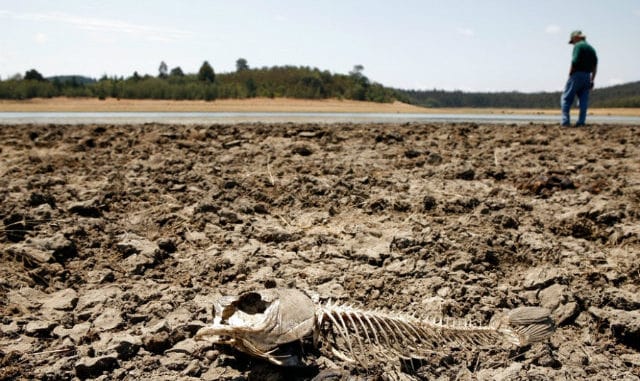
SANTIAGO – Chile’s interior ministry has decided to reactivate a measure that declared the entire Coquimbo region (IV) and 14 municipalities of Valparaíso region.
The lack of water led to the reactivation of the measure that had been suspended due to improvements in rainfall in the area.
The entire Region of Coquimbo and 14 municipalities of the Valparaíso Region are once again classified as catastrophe due to drought, after the declaration applied between 2012 and 2016 was interrupted due to the improvement of rainfall conditions.
Although this year was considered rainy, rainfall did not manage to cope with the water needs of some areas of the region, considering the more than 10 years of intense drought.
For this reason, the Ministry of the Interior and Public Security, announced through the Official Gazette, the extension to the declaration of drought catastrophe zone for the regions of Coquimbo and Valparaíso, due to the lack of water and various problems that exist in the communes of both zones.
The Intendant of the Coquimbo region, Claudio Ibáñez, referred to this measure, which seeks to benefit the population that is still affected by the lack of water resources in the area.
“In the month of September we began the efforts to declare the extension of the Coquimbo region, as an area affected by the catastrophe caused by the drought. Many believe that there are no drought products from the rains, but we must clarify that all the water accumulated in the reservoirs, serves to solve the water problems of agriculture, but that product of the long drought of more than 10 years of the area, many local aquifers have not yet achieved the rate of water recovery, nor have the problems for human consumption needed in other inland areas been solved,” he said.
The drought also affected various productive sectors, generating complications for the agricultural, mining and hydroelectric sectors, due to the reduction of the contribution flows from all the hydrological accounts, which caused an aggravation of the economic conditions of the zones.
For this reason, Ibáñez stressed that there are tax relief measures for small and medium farmers, as well as facilities for the payment of patents for rural water use, as a result of this situation.
“It will favor the communes of the region of the three provinces, which generates a relief to the various productive areas and also to the people. It also generates facilitation measures to hire advice from government services to carry out works, studies and everything related to the drought and on the other hand alleviates debts for delayed payments by the agricultural sector,” he added.
The communes of Valparaiso where the zone of catastrophe was decreed are La Ligua, Petorca, Cabildo, Zapallar, Papudo, Limache, San Felipe, Catemu, Quillota, Los Andes, San Esteban, Panquehue, Calle Larga and Llay Llay.



